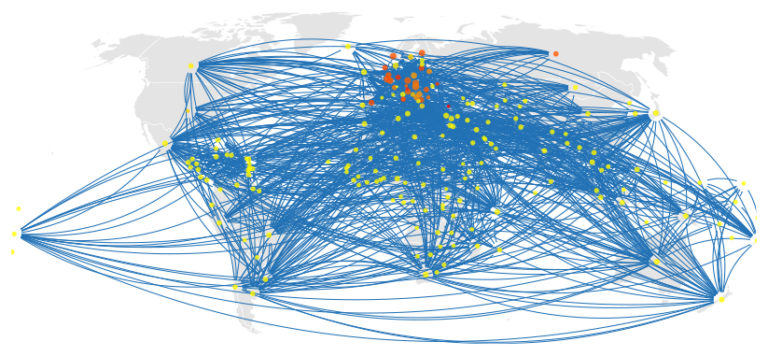What does network analysis teach us about international environmental cooperation?

Download
A more recent version of this paper was been published in the journal Ecological Economics in November 2022.
Solving environmental problems often requires international cooperation. Sometimes this involves only a few parties (e.g. to manage a shared water body), sometimes it requires broad coalitions of many nations (e.g. for global threats like climate change). There are now over 2,000 international environmental agreements (IEAs) to govern such coordination, and they involve literally every country in the world. This paper applies the tools of network analysis to understand the global network of international cooperation this system of IEAs creates.
The authors identify four key network features – or stylised facts – which characterise the emergence of this cooperation network. They find, first, that a statistically significant cooperation network did not materialise until the early 1970s, but since then the network has grown continuously in strength, resulting in higher connectivity and intensity of cooperation between signatory countries. Second, over time the network has become closer, denser and more cohesive, allowing more effective policy coordination and knowledge diffusion. Third, the network, while global, has a noticeable European imprint: initially the United Kingdom and more recently France and Germany have been the most strategic players to broker environmental cooperation. Fourth, international environmental coordination started with the management of fisheries and the sea, but is now most intense on waste and hazardous substances. The network of air and atmosphere treaties is weaker on a number of metrics and lacks the hierarchical structure found in other networks. It is the only network whose topological properties are shaped significantly by UN-sponsored treaties.
Key points for decision-makers
- Network analysis is a systematic, mathematical way of studying the relationship between different entities. A network consists of a series of nodes (in this case, countries), which are connected through a series of links (in this case, joint membership in an international environmental agreement). The number and the structure of the links contains information about how the nodes interact. Network analysis can be applied to social systems (e.g. people with shared social connections), economic systems (e.g. countries and their trade relationships) and technical systems (e.g. electrical circuits).
- The international network of environmental cooperation provides an effective platform for policymakers to coordinate environmental protection, diffuse policy solutions and share experience.
- Our ability to successfully manage environmental threats depends not just on the quality of individual environmental agreements, but on the synergies and interactions between multiple treaties.
- How countries are positioned in the cooperation network (e.g. the number of links they have, the path length to other countries) defines their ability to play an international leadership role on the environment.

